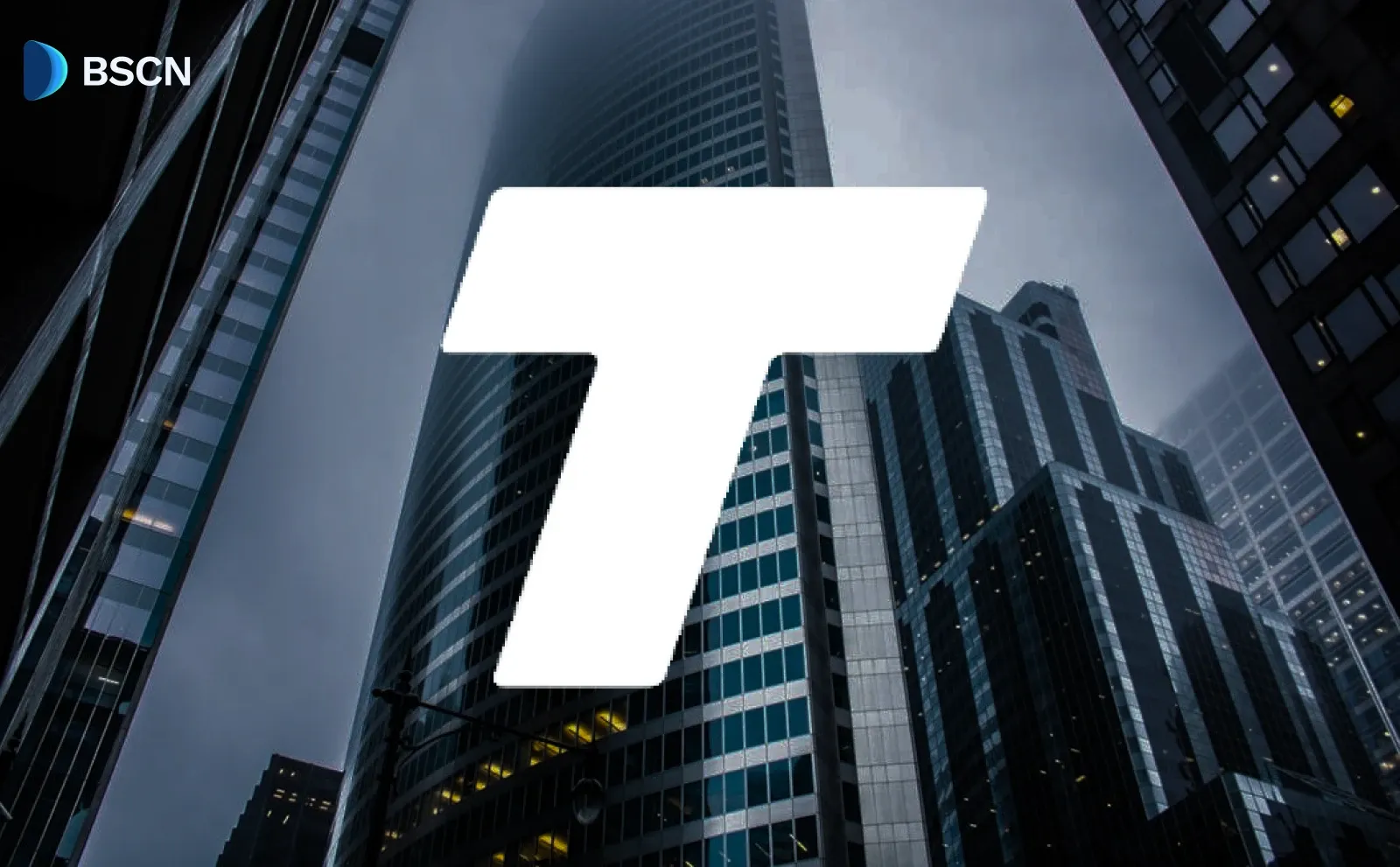News
(Advertisement)
Kaspa Recent Updates: What’s New Across Infrastructure, Wallet Activity, & More

Kaspa advances with an EVM bridge, major wallet accumulation trends, VProgs smart contract progress, a Web3 browser, and a decentralized social app.
Soumen Datta
November 21, 2025
(Advertisement)
Table of Contents
Kaspa’s recent updates cover infrastructure growth, smart contract research, community tools, and on-chain activity. The most significant developments include a new multi-chain bridge, major shifts in wallet accumulation patterns, progress on Kaspa’s VProgs architecture, and upcoming applications built directly on the network.
Kaspa’s New Multi-Chain EVM Bridge
Kaspa community member James Lee announced the launch of a multi-chain EVM bridge built by Lee and the the teams behind Kaspa Finance. The bridge connects Kaspa to BNB Chain, with support already prepared for 30–40 additional networks.
The bridge is accessible through kaspabridge.com and is designed to give Kaspa users native access to EVM-based assets and applications. Lee said the teams focused on building rather than promising future features, and the next networks will be chosen through a community vote. The stated goal is to avoid gatekeeping and allow users to decide which chains should be connected next.
The bridge marks a significant infrastructure addition because Kaspa has not historically had deep integration with EVM ecosystems. With this connectivity, users can move assets between Kaspa and other chains while keeping the transactions within a clear and auditable workflow.
On-Chain Activity
According to Kaspa Report, there is notable activity involving the network’s largest wallet, known as Wallet #1. The address accumulated more than twice the total amount of KAS generated through block emissions in October 2025. This is the first time an address on Kaspa has accumulated more than the monthly supply itself.
Why This Matters
On-chain data indicates that most inflows into Wallet #1 came from an exchange that publicly stated it had no connection to the address. This implies that multiple holders sent KAS to the same target rather than a single user shifting funds internally. The result is a concentration of KAS supply under one holder.
However, Kaspa’s broader supply data shows the opposite trend at the network level. While Wallet #1 increased its concentration, the percentage of circulating KAS held by the top 0.01% of addresses actually declined during the same period. This suggests strong redistribution from large holders to smaller ones, outpacing even the rapid pace of Wallet #1’s accumulation.
A key factor behind the wallet’s aggressive buying was the market crash on October 10, triggered by a Binance price oracle failure. The sharp decline likely gave Wallet #1 an opportunity to accumulate KAS more quickly.
Kaspa’s report states that the network’s underlying decentralization trends remain intact because wider distribution continued even as a single wallet accumulated heavily.
VProgs: Kaspa’s Road Toward Smart Contracts and DeFi
Kaspa developer Michael Sutton shared the technical structure of VProgs (Verifiable Programs), which are intended to bring smart contract capabilities to Kaspa. VProgs are built on the Based Rollups model and follow the principle of “off-chain compute, on-chain verify.”
November Meetup | Smart Contracts in Practice | vProgs Architecture | Web3 Devs underground with StarkWare & Kaspa. https://t.co/JEgrnIV398
— Web3 Devs Underground (@Web3_Devs) November 17, 2025
Kaspa’s approach does not attempt to run complex smart contracts directly on L1. Instead, the L1 becomes a high-performance sequencer and data availability layer.
Kaspa L1’s Role
Kaspa already delivers high throughput:
- 10 blocks per second (BPS)
- 3,000+ transactions per second (TPS)
The system favors decentralization by keeping node requirements low. Complex computation is handled off-chain, but all transactions are sequenced and verified by the L1 to maintain integrity.
Problems With Current L2 Models
Sutton explained two major pain points seen in the Ethereum ecosystem:
- The Single L2 Problem:
A single large L2 can be congested by a high-demand application, causing delays across the chain. - The Multiple L2 Problem:
When many L2s exist, liquidity becomes fragmented. Funds on one chain cannot interact with applications on another.
Kaspa’s Solution Through VProgs
VProgs introduce two structural features:
1. Unified Sequencing
All applications share the same canonical ordering of transactions because the L1 sequences everything.
2. Synchronous Composability
Different applications can interact within one atomic transaction.
This creates a single unified liquidity pool across the network, removing cross-chain friction.
The Scalability Flywheel
Sutton referenced concepts from random graph theory. If operators produce ZK proofs infrequently, dependencies grow too large, increasing cost. If proofs are produced often, the system stays efficient.
This encourages high-frequency proving, lowering fees, increasing usage, and reinforcing the cycle.
Alignment With Industry Trends
Sutton pointed out that this design mirrors broader industry direction. During the same meetup, Nico from StarkWare emphasized moving computation off-chain to simplify smart contracts. Kaspa’s VProgs follow this exact model by letting the L1 handle only sequencing and verification.
Navigate: A New Open-Source Kaspa Browser
Kaspa developer @gptcrypto89 is working on a Web3 browser called Navigate, built specifically for Kaspa’s ecosystem.
The browser includes:
- Multi-wallet support
- On-chain DNS for KNS domains
- Built-in AI assistant
- On-chain chat
- Wallet and asset management tools
Navigate is designed as a local, open-source Web3 client that makes Kaspa applications easier to access. The focus is on giving users a complete toolset for interacting with Kaspa without depending on external corporate applications.
K Social: A Fully Decentralized Social App Nearing Mainnet
A new decentralized social platform called K Social is preparing to launch on Kaspa mainnet. Developer TheSheepCat described the platform as fully local and uncensorable.
The app works through:
- A local K app (desktop, Android, or local webapp)
- A local K-indexer
- A locally run Kaspa node
Because all components can run locally, no central entity can remove posts or limit access. The team has already posted the first K Social content on mainnet ahead of the public release.
Conclusion
Kaspa’s recent updates highlight a mix of infrastructure work, ecosystem tools, and technical research. The EVM bridge increases cross-chain access. Wallet activity shows dynamic supply movement. VProgs outline a clear path for verifiable computation and synchronized liquidity. New applications like Navigate and K Social expand the usability of the network. As these components continue to develop, Kaspa is building a broader environment grounded in efficient verification, user control, and open participation.
Resources:
Kaspa X platform: https://x.com/kaspaunchained
Kaspa Report X platform: https://x.com/KaspaReport
Kaspa Daily X Article on vProgs: https://x.com/DailyKaspa/status/1966149209968505132
vProgs Yellow Paper Draft v0.0.1: https://github.com/kaspanet/research/blob/main/vProgs/vProgs_yellow_pa
Read Next...
Frequently Asked Questions
What are the biggest recent updates in the Kaspa ecosystem?
Kaspa community member, James Lee, announced a multi-chain EVM bridge, major progress on VProgs smart contracts, new community applications like the Navigate browser, and upcoming tools such as K Social. On-chain data also revealed significant wallet accumulation trends.
What is Kaspa working on for smart contracts?
Kaspa is developing VProgs, which use off-chain computation and on-chain verification. This gives applications unified sequencing, synchronous composability, and a single liquidity pool without overloading the L1.
Did Kaspa’s largest wallet impact decentralization?
The largest wallet accumulated more than twice October’s supply, but network data shows that overall KAS distribution still shifted toward smaller holders, indicating continued decentralization.
Disclaimer
Disclaimer: The views expressed in this article do not necessarily represent the views of BSCN. The information provided in this article is for educational and entertainment purposes only and should not be construed as investment advice, or advice of any kind. BSCN assumes no responsibility for any investment decisions made based on the information provided in this article. If you believe that the article should be amended, please reach out to the BSCN team by emailing [email protected].
Author
 Soumen Datta
Soumen DattaSoumen has been a crypto researcher since 2020 and holds a master’s in Physics. His writing and research has been published by publications such as CryptoSlate and DailyCoin, as well as BSCN. His areas of focus include Bitcoin, DeFi, and high-potential altcoins like Ethereum, Solana, XRP, and Chainlink. He combines analytical depth with journalistic clarity to deliver insights for both newcomers and seasoned crypto readers.
(Advertisement)
Latest News
(Advertisement)
Crypto Project & Token Reviews
Project & Token Reviews
Comprehensive reviews of crypto's most interesting projects and assets
Learn about the hottest projects & tokens
Latest Crypto News
Get up to date with the latest crypto news stories and events












